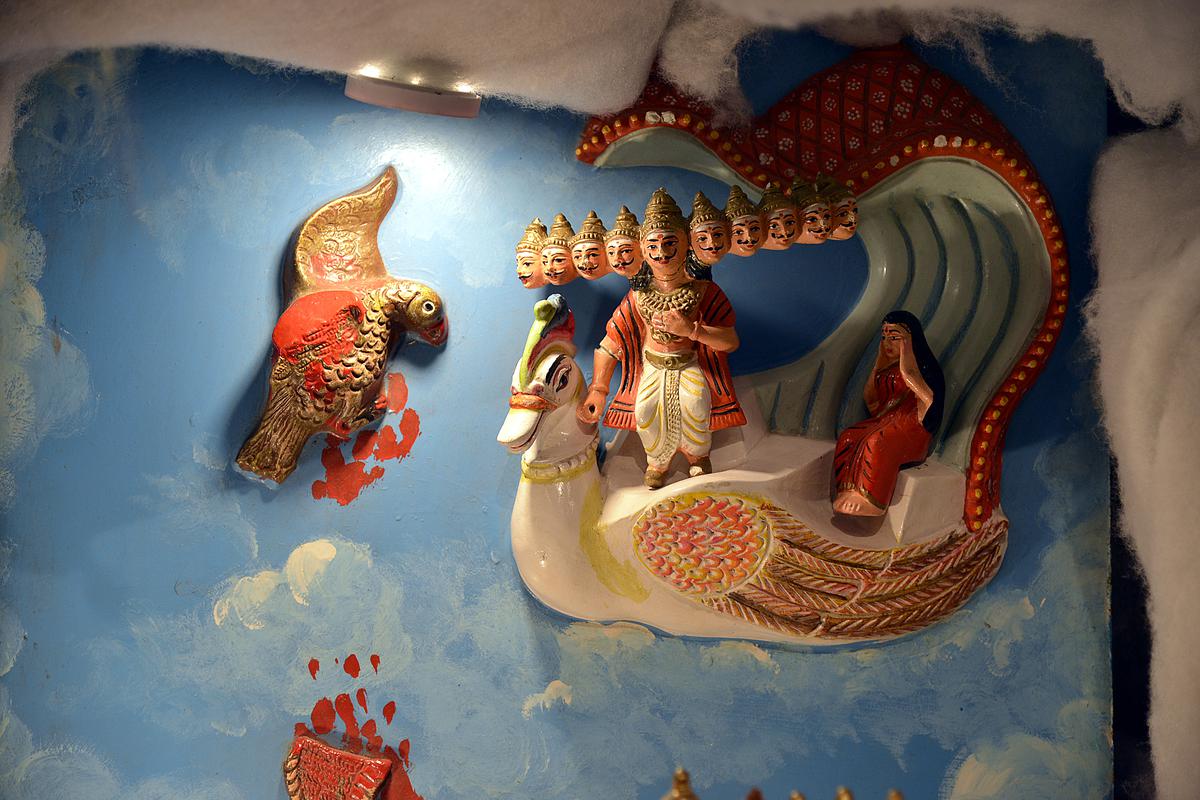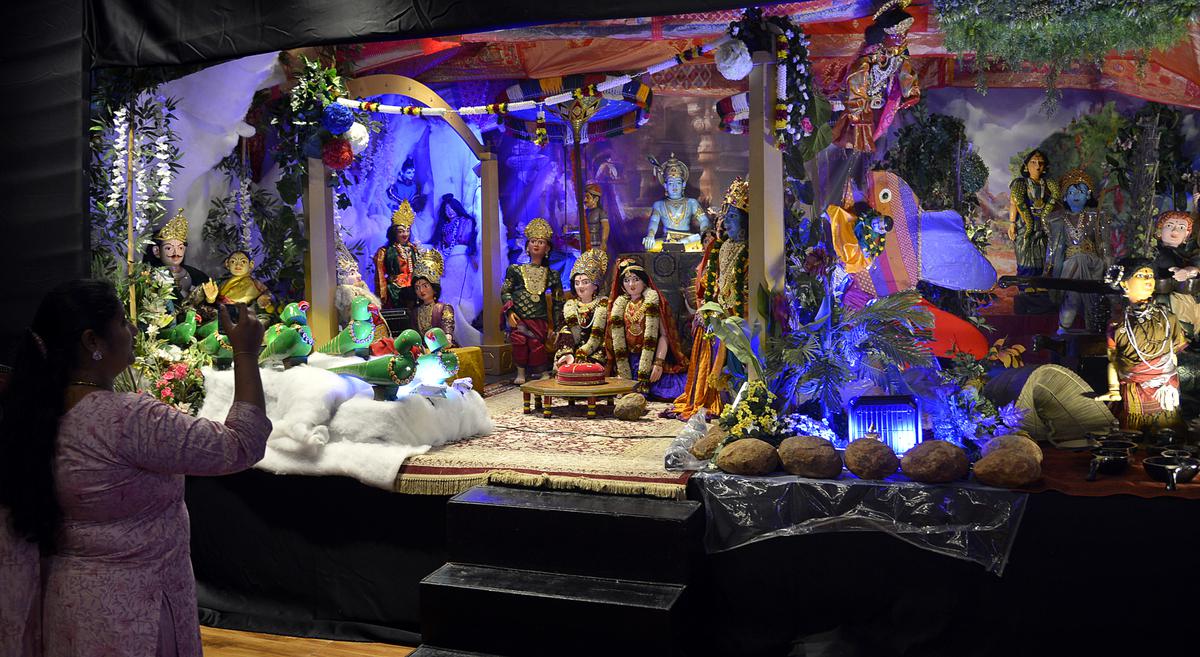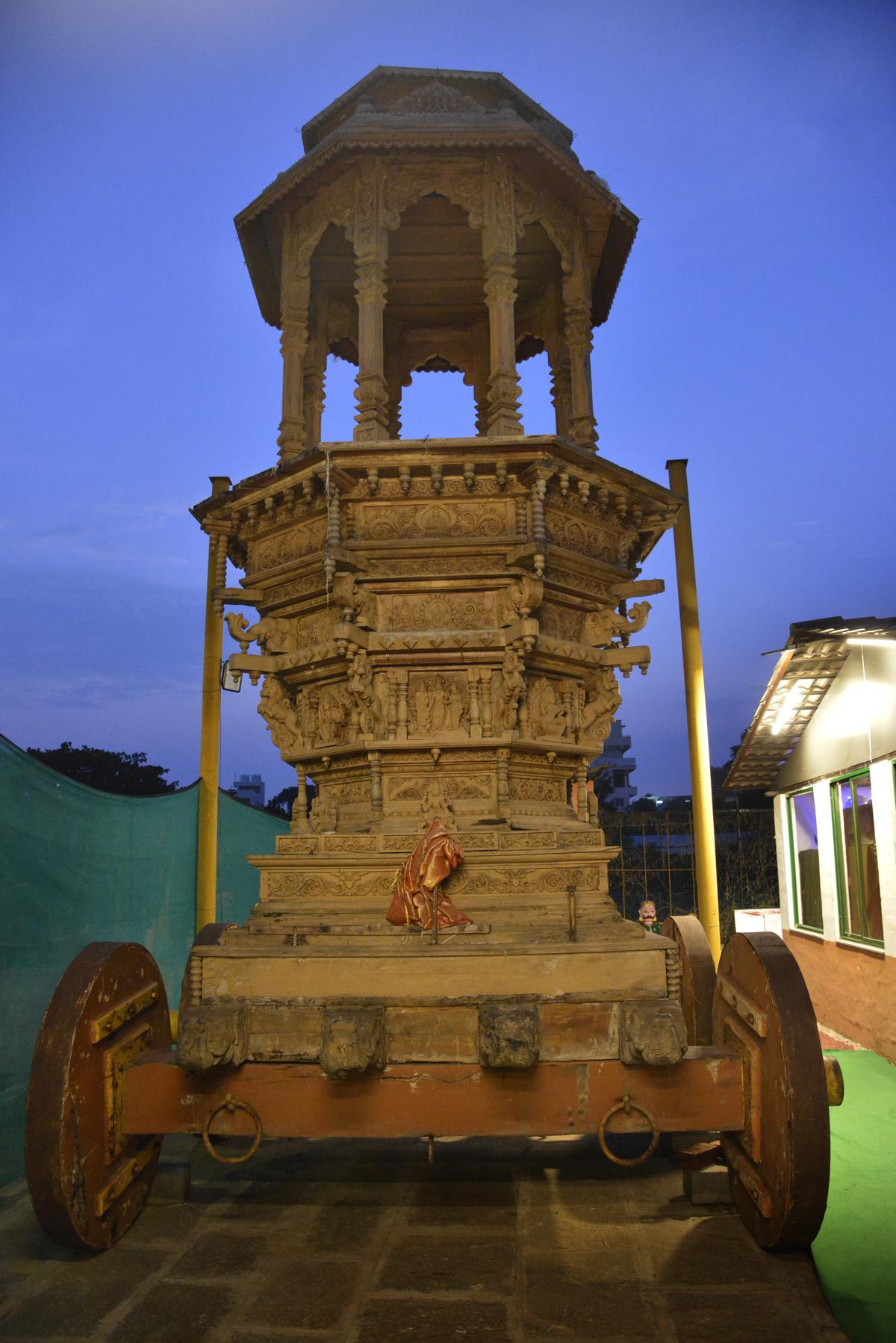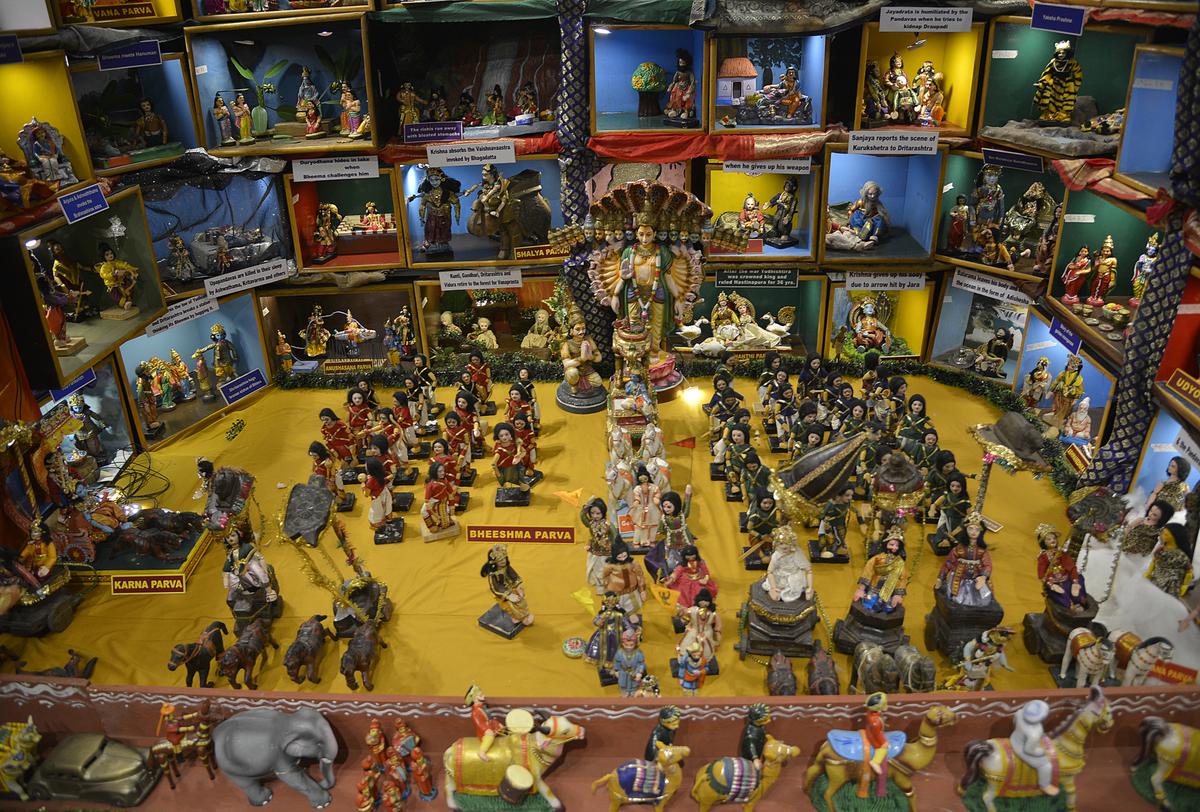Have you ever seen a Dasara-display of more than 15,000 dolls?
Well, you soon will be able to! At Mandala Cultural Centre on Kanakapura Main Road, figurines of wood, cloth and terra cotta sit pretty in thematically created spaces as part of the Navaratri showcase from master puppeteer and storyteller Anupama Hoskere.
“Many of the dolls go back four generations, and yet some of the wooden ones haven’t even lost their sheen,” says Anupama, founder-director of the 19-year-old Dhaatu Puppet Theater specialising in ancient art forms of doll-keeping and puppetry to tell stories. Anupama, a Sangeet Natak Akademi Awardee, also aims to develop Mandala into a platform for puppetry and performance arts — a preview of which the public will get a chance to witness during Navaratri.
Encompassing an area of an acre, Mandala comprises a large open-air space for puppet shows amidst a kalyani (pond) bordered by 60 trees, many of which find mention in the Ramayana and Mahabharata. Other fascinating inclusions are a puppet-making centre for hands-on teaching, puppet gallery, puppet shop, doll display glass house and a Puppet Education Centre.

Display of Dolls at Mandala Cultural centre as a part of Dhaatu Navaratri Mahotsava in Bengaluru
| Photo Credit:
Bhagya Prakash K
The glass house is a treasure trove of dolls thematically displayed showcasing the Lineage of Krishna, Krishnaleela and the Mahabharata, apart from housing 15,000 dolls that Anupama cherishes.
“Look at this Ratha-beedi (Chariot street), it was crafted for storytelling sessions with a chariot as a backdrop,” says Anupama, as we stroll through the premises where puppetry and performing arts is set to thrive.
At the gallery, huge puppets used by international puppeteers have been displayed for heritage value, Anupama says, “This is probably the largest collection of its kind in the country with puppets from across the world like the Czech Republic, England, Spain, Bulgaria, Thailand, Indonesia, South America and Indian states like West Bengal, Rajasthan and Jharkhand, besides Karnataka.
“Karnataka has seven distinct varieties of puppetry, the largest in the world. And we will have all the varieties on display here. Puppet making in most states is insignificant as they don’t teach the art anymore, but have opted to use makeshift ones,” says Anupama, who insists that the traditional methodologies in puppet making have to be continued as they are ergonomic, light-weight, beautiful and long-lasting.

Display of Dolls at Mandala Cultural centre as a part of Dhaatu Navaratri Mahotsava in Bengaluru
| Photo Credit:
Bhagya Prakash K
“This is a science that we are trying to pass on at Dhaatu,” says Anupama, adding that her research in puppetry had led her to discover the Bhagavatha Shailee puppets of Eachanoor in the Mysore folklore museum. “There were also the puppets of Dharwad and Ranibennur that were amazing.”
Holding a Masters in Computer Engineering with a Fellowship in Puppetry, Anupama grew up with dolls. With guidance from veterans such as MR Ranganath Rao who taught her to make puppets, Anupama started Dhaatu with husband Vidyashankar Hoskere in 2004.
At Mandala
Standing in a space where Herculean efforts have been made to aid traditional arts find expression, one wonders if an interest in dolls and puppetry is gradually on the rise? “Currently, there are more takers for puppetry in urban India than in rural India,” says Anupama.
Storytelling is so strong that the association dates back to the pre-Vedic period. “String puppets find mention in the Bhagavatha Purana and the Mahabharata. Shadow puppets were used in Sanskrit theatre. In fact, puppet shows or ‘Bombeyata’ were said to be amongst ancient India’s 64 traditional art forms. Today, string, rod, shadow and hand puppets are commonly used in performances across Karnataka.”

Display of Dolls at Mandala Cultural centre as a part of Dhaatu Navaratri Mahotsava in Bengaluru
| Photo Credit:
Bhagya Prakash K
The Dhaatu Puppet Fest debuted in 2009, when Anupama’s deep sense of art, culture and aesthetics had her constantly contemplating on how she could expand her horizons in puppetry and bring in more awareness on the dying art. Her whirlwind tours and performances in India would immediately have a ‘connect,’ but her vision was to give the nation’s puppetry scene, a global platform.
“It was in 2009 that I realised Bangalore hadn’t witnessed a puppet festival for 21 years! Dhaatu began as a state festival from then on, and I have trained nearly 100 as puppeteers, many of whom are performers now, and hundreds more have learnt the art of puppet making. In the past, puppetry as an art was hardly taught as it was a family profession and the insecurity of losing out on business made it inaccessible to all. Now, Dhaatu is trying to reach out with traditional and classical puppets of India with contemporary and universal themes as its stories,” she says.
Anupama has three or four new productions every year. “Works of Maharshis Vyasa, Valmiki and Kalidasa are litmus tests for any performing artist in India. But I recall one inspirational visit to Hampi that filled my imagination with Purandaradasa singing on the banks of River Tunga, Krishnadevaraya building the Krishna temple, worship of Virupaksha temple, Hanuman bringing Sita’s jewels out of Sugreeva’s cave, Mathanga muni’s abode and the like — all of this became my next production, Vijayanagara Vaibhava where the River Tunga stands still,” she says.

Display of Dolls at Mandala Cultural centre as a part of Dhaatu Navaratri Mahotsava in Bengaluru
| Photo Credit:
Bhagya Prakash K
Popularising puppets
Anupama was awarded the Erasmus Mundus Scholarship a few years ago to teach puppetry in universities in France and Belgium. When France celebrated the works of poet La Fontaine who had translated the Panchatantra into French, Anupama presented a puppet show on Mooshika Katha, a story from the Panchatantra, as a teaching aid to university students.
Her 20-city tour to the US later, saw her land with 17 suitcases of puppets and props for Kalidasa’s Maalavikaagnimitram, which was performed at packed auditoriums. Anupama says one common reaction from all the venues there was, ‘We did not know such a rich art form existed in India!’
And where does India stand in comparison to other countries? India has the largest variety of puppets that have grown independently, reflecting the cultures of its regions, she says. “The puppets of India are beautiful in design and costume. They tell stories that entertain at the outset, but are layered with deeper meaning. This is a beautiful feature of our traditional and classical pan-Indian puppetry,” says Anupama.
Indian puppetry excels in full-fledged natakas, which have dialogue, music, dancing and background work suitable for all audiences. “Western puppetry is deeply invested in its design systems and its reflections on realism. The world today is linked, so the problems of one nation are pretty much the problems of another,” she says.
Dhaatu’s Navaratri celebrations are on till November 11 at Mandala Cultural Centre, Kanakapura Main Road, near Silk Institute Metro Station. For program details log in to https://www.dhaatupuppets.org
Stay connected with us on social media platform for instant update click here to join our Twitter, & Facebook
We are now on Telegram. Click here to join our channel (@TechiUpdate) and stay updated with the latest Technology headlines.
For all the latest Entertainment News Click Here
For the latest news and updates, follow us on Google News.
